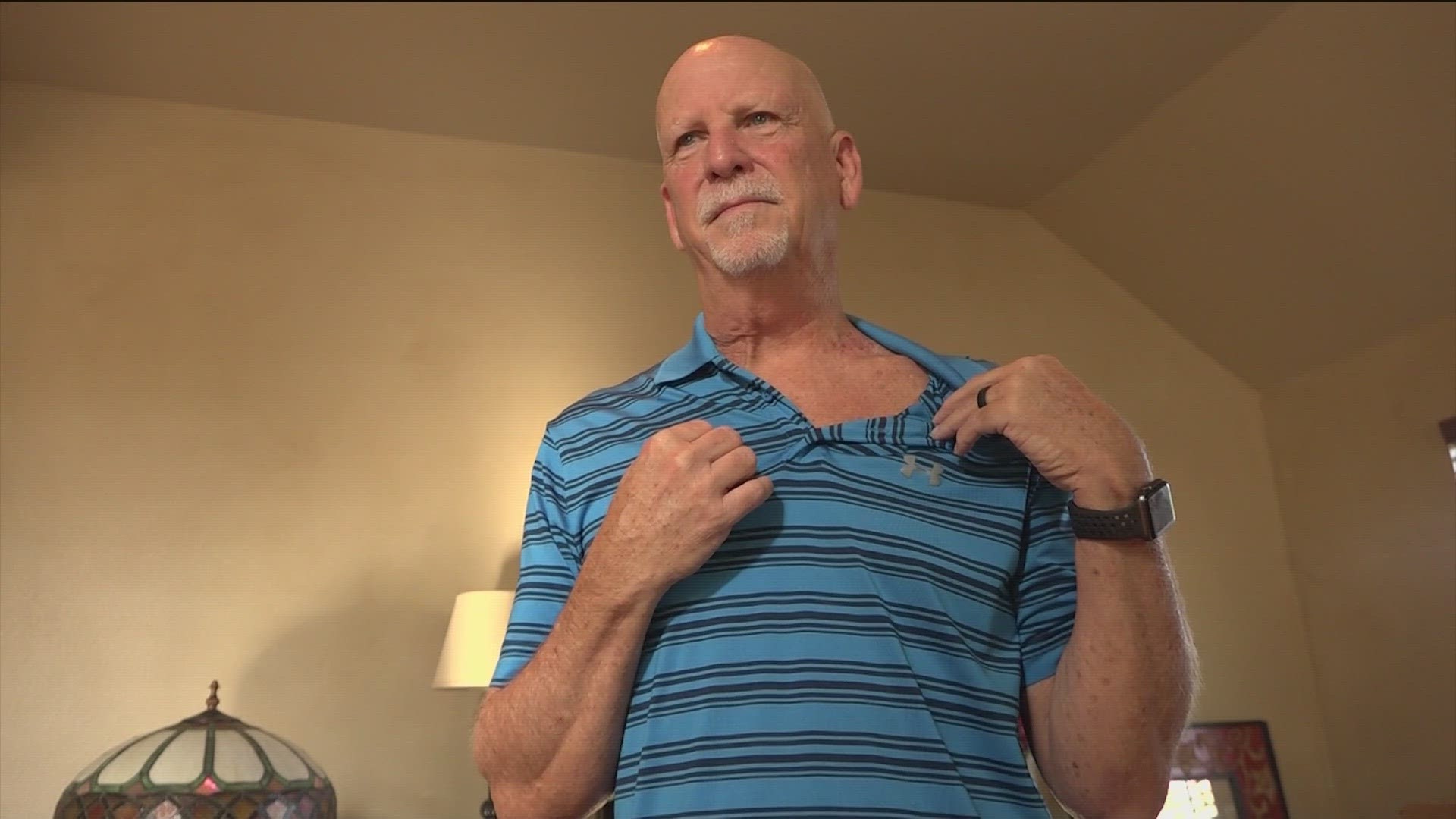AUSTIN, Texas — Editor's note: The above video states that Keith Westmoreland's last name is Moreland, which is inaccurate.
It doesn't take long to get a sunburn in Central Texas. With many of us spending a lot of time outdoors, it's important to protect ourselves from the sun, especially as the UV index trend is very high.
Friday's UV index is a 10. That means there is a great risk of sunburn because it takes less time for the rays to damage your skin.
"We are seeing an increase in the number of skin cancers, but that has been on the rise for many years now," said CDR Dr. Christopher Oxner, FACS, USN from Texas Oncology Surgical Specialists - Austin Central and Cedar Park. "It is most likely due to multiple factors of better detection and awareness, longer life span and sun exposure."
KVUE caught up with Keith Westmoreland, who has been diagnosed with skin cancer four times in about a year.
"My first diagnosis was basal cell carcinoma, which is the least likely of cancer," Westmoreland said.
He was diagnosed in May 2022 and had it removed.
"One of my follow-ups on Dec. 12, my dermatologist looked at it and said, 'You got a spot that doesn't look good,'" Westmoreland said. "She sent it off to be tested and, within a week, I was diagnosed with melanoma skin cancer."
Melanoma is less common than some other types of skin cancer, but it is more likely to grow and spread, according to the American Cancer Society.
Westmoreland moved quickly to have the melanoma removed. Within 30 days, he had his surgery. They cut a 2-inch hole in the back of his head to remove the cancer, and then he added a skin graft to cover the area.
Dr. Oxner was the surgeon in charge of that procedure.
After that, Westmoreland was diagnosed with skin cancer two more times.
"It's tiring because it's lots of stitches," he said. "It's a lot of injections and shots, just like when I go to get my three-week immunotherapy, they take blood, check your blood, then you get your IV ... I've been stuck on needles. They don't bother me, but boy, it just wears you out."
Oxner said it's uncommon for someone to be diagnosed with skin cancer four times in one year. However, Westmoreland might have some existing conditions that make him more susceptible.
There are some variations in risk factors based on the type of skin cancer, but generally, they are:
- Environmental: chronic sun exposure, total site specific exposure and number of sunburns (working outside, tanning beds, etc.)
- Age and individuals with light skin, hair, eye color, personal history of skin cancer, family history
- Genetic: Albinism, Xeroderma Pigmentosa, other inherited gene mutations
- Immunosuppressed patients: organ transplantation, lymphoma, chronic lymphocytic leukemia, corticosteroids use, HIV
Oxner said people should watch any new lesions and changes in moles.
"Anything that is new and that is changing and growing needs attention," he said.
Oxner said people can also watch for the ABCDE of melanoma:
- A = Asymmetry: One half of the lesion is different from the other in size, shape or color
- B = Border: The edge or border of the lesion is not smooth
- C = Color: The color of the lesion contains various shades of tan, brown, black and in some instances red, white or blue
- D = Diameter or Dark: A lesion that is darker than others, regardless of size
- E = Evolving: The lesion changes over time or develops new symptoms, such as bleeding, crusting or itching

